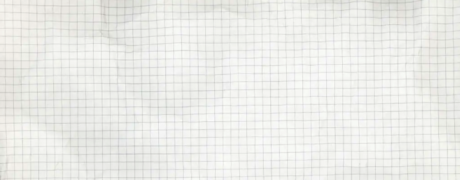The TOGAF Framework: A Comprehensive Guide to Enterprise Architecture

The TOGAF Framework (The Open Group Architecture Framework) is one of the most widely used methodologies for designing, planning, implementing, and governing enterprise architecture. Developed by The Open Group, TOGAF provides a structured approach to aligning IT infrastructure with business goals, ensuring both agility and efficiency in complex organizations.
This guide will explore what the TOGAF Framework is, its key components, and how organizations can use it to achieve strategic objectives.
What is the TOGAF Framework?
TOGAF is a comprehensive framework for enterprise architecture (EA), guiding organizations in creating an IT strategy that supports long-term business goals. It offers a set of tools, principles, and methodologies to help enterprises design a cohesive architecture while minimizing risk and ensuring interoperability.
First introduced in 1995, TOGAF has evolved to address the dynamic needs of modern businesses. It’s built around a step-by-step process, making it suitable for organizations of all sizes and industries.
Key Components of the TOGAF Framework
TOGAF is built on four key components:
1. Architecture Development Method (ADM)
The ADM is the core of TOGAF, providing a step-by-step process for developing and managing enterprise architecture. It includes eight iterative phases:
- Preliminary Phase: Establishing architecture principles and governance.
- Architecture Vision: Defining the scope, stakeholders, and objectives.
- Business Architecture: Developing models to describe how the business operates.
- Information Systems Architectures: Designing data and application architectures.
- Technology Architecture: Planning the IT infrastructure to support applications.
- Opportunities and Solutions: Identifying and prioritizing initiatives to achieve the architecture vision.
- Migration Planning: Developing a roadmap for transitioning to the target architecture.
- Implementation Governance: Ensuring solutions are delivered as planned.
2. Enterprise Continuum
The Enterprise Continuum organizes architecture assets, including principles, reference models, and reusable building blocks, to ensure consistency across projects.
Practical Example:
A retail company uses the Enterprise Continuum to catalog reusable data models for customer management, enabling consistent architecture across departments like sales and marketing.
3. Reference Models
TOGAF includes two key reference models to provide a foundation for enterprise architecture:
- TOGAF Foundation Architecture: Offers guidelines on building reusable components.
- Integrated Information Infrastructure Reference Model (III-RM): Focuses on supporting digital services like CRM and ERP systems.
4. Architecture Capability Framework
This component ensures that an organization has the processes, tools, and governance structures to support enterprise architecture development and management effectively.
Benefits of Using the TOGAF Framework
1. Business-IT Alignment
TOGAF bridges the gap between business needs and IT capabilities, ensuring both are aligned for long-term success.
2. Scalability
Its modular and iterative approach makes it suitable for organizations of all sizes, from startups to multinational enterprises.
3. Cost Efficiency
By using standardized practices and reusable assets, TOGAF reduces duplication of effort and minimizes risk.
4. Improved Decision-Making
TOGAF’s structured methodology provides clear insights, enabling stakeholders to make informed decisions about IT investments and changes.
Challenges of TOGAF Implementation
1. Complexity
The framework’s extensive methodology can be overwhelming, especially for smaller organizations.
2. Resource Intensive
TOGAF requires skilled architects and significant time investment, which can be challenging for organizations with limited resources.
3. Resistance to Change
Implementing enterprise architecture often involves cultural and operational shifts, which can face resistance from employees.
Practical Applications of TOGAF
Scenario 1: Modernizing IT Infrastructure
A global manufacturing company uses TOGAF to migrate from legacy systems to cloud-based solutions. Through the ADM phases, they define a clear migration roadmap, ensuring minimal disruption and aligning technology investments with business goals.
Scenario 2: Improving Data Governance
A financial services firm applies TOGAF to create a unified data architecture. By cataloging reusable data assets in the Enterprise Continuum, the firm ensures consistent data governance across departments, reducing errors and improving decision-making.
Scenario 3: Developing a Digital Strategy
A retail chain leverages TOGAF to design a technology roadmap for implementing an omnichannel customer experience. The framework helps align e-commerce, in-store technology, and CRM systems with the company’s vision.
Steps to Implement TOGAF in Your Organization
Step 1: Build an EA Team
Form a dedicated enterprise architecture team, including stakeholders from IT and business units.
Step 2: Define Scope and Objectives
Clarify what the architecture aims to achieve, whether it’s improving IT efficiency, enabling digital transformation, or supporting business expansion.
Step 3: Follow the ADM Phases
Use the ADM as a guide to develop a comprehensive architecture. Iterate as necessary to refine the design.
Step 4: Leverage Reference Models and Tools
Adopt reusable components and reference architectures to speed up development and ensure consistency.
Step 5: Monitor and Govern Implementation
Use the Architecture Capability Framework to track progress and ensure the architecture aligns with organizational goals.
Conclusion
The TOGAF Framework provides a robust methodology for designing and managing enterprise architecture. Its emphasis on alignment, scalability, and reusability makes it an invaluable tool for organizations seeking to optimize IT and business processes.
Whether you’re modernizing your IT infrastructure, enhancing data governance, or creating a digital transformation roadmap, TOGAF offers the guidance you need to succeed.
Ready to explore TOGAF? Share your goals or challenges with enterprise architecture in the comments below!



